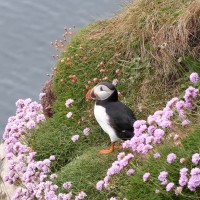- Overview
- Full Itinerary
- Photo Gallery
- Costing
- Travel Details
- Trip Reports
- Guide
- Map
- Know Before You Go
- Other Trips You May Like
Join us to explore the heart of Europe in Austria and Hungary. Enjoy European birding at its best, and with our expert local guide, Gerard Gorman, we highlight the region’s other wildlife, plants, interesting heritage livestock breeds, and fine historic architecture. We enjoy local foods and even visit an old winery in Hungary!
Our route takes us from Vienna to Budapest, visiting the many different and wonderful birding habitats in between. Because of their past Cold War era isolation, many of these border zone places became refuges for wildlife and today some areas have indeed been designated as wildlife preserves.
We stay in small hotels and guesthouses with en-suite rooms and local cuisine, and of course good birding locations nearby. This is central Europe at its finest!




- "There were several birds that I have read about and wanted to see for years - hoopoes, all the cool finches, bustards, and 8 of 9 woodpecker species (especially the wryneck and black woodpeckers). We saw more birds than I had expected and the combination of interesting sites, cultural and historical context, excellent accommodations, and a terrific guide made this trip special and memorable. Eastern Europe is not on many people's radar as a birding destination, so it is a unique destination. (In fact, my local birding shop owner was very impressed that I had been on the trip.)" — James Serach, 2023 Traveler
- "Outstanding. Good birds. Great guide in Gerard Gorman. Good food and lodging. Good pacing. Very satisfied with my experience. More lifer birds than I expected to get, including great views of Wryneck, a species that I especially wanted." — Brian Elliott, 2023 Traveler
Tour Highlights
- Enjoy walks through scenic mountains, pastures, flower-filled meadows, and forests in search of Golden Eagle and a host of woodpeckers (Gerard Gorman’s specialty): Eurasian Green, Grey-headed, Black, White-backed, Middle Spotted, Lesser Spotted, and Syrian.
- Explore Neusiedler See-Seewinkel NP in Austria and Ferto-Hansag NP in Hungary that together protect the mixed wetland habitats around the scenic steppe lake of Neusiedler
- Discover cross-border habitats of both countries that include salt-lakes, saline-marshes, fens, traditionally managed pastures, grazing meadows, and wet woods, looking for breeding shorebirds like Kentish Plover, Black-tailed Godwit, Common Redshank, Pied Avocet, and Black-winged Stilt
- Bird through Hungary to Kiskunság National Park on the Hungarian Great Plain in search of Great Bustard
- Spend two nights in a rural village at a traditional, family-run guest house in the Bükk Hills
- Search for nine species of woodpecker in the Bükk Hills, as well as Roe and Red Deer, Red Squirrel, Imperial Eagle, and many butterflies on the wing
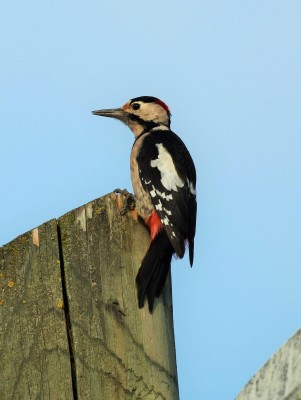

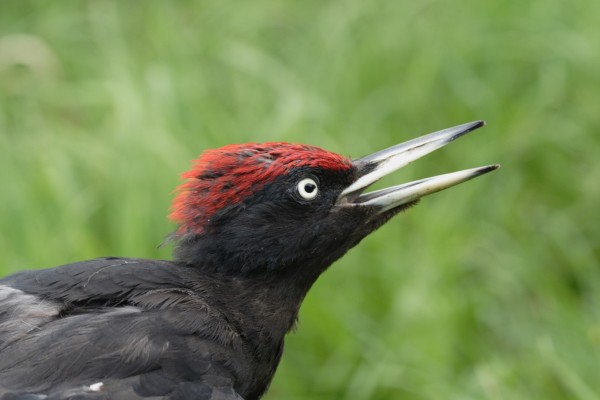

Trip Itinerary
Itineraries are guidelines; variations in itinerary may occur to account for weather, road conditions, closures, etc. and to maximize your experience.
Thurs., June 19 Vienna | Alpine Foothills
Welcome to Austria! Our tour begins in Vienna at Noon. From the airport/hotel we drive into alpine foothills, which begin after about an hour’s drive to the southwest. We bird as we go (be sure to pack your binoculars in your carry on!), enjoying a packed lunch in a suitably birdy spot. This evening we have a late afternoon check in at our family-run guesthouse where we spend the next three nights.
Accommodations at a family-run Gasthof Vralpen Eschenau guest house in the foothills (L,D)
** This is an ideal time to explore Vienna ahead of the tour, you might consider coming early to explore a bit and rest up from your travels.
Fri., June 20 & Sat., June 21 Foothills Birding
Enjoy the next two full days to bird the surrounding scenic mountains, pastures, meadows, and forests outside of Vienna on moderately-paced and scenic walks. Montane and conifer forest birds here include Golden Eagle, Stock Dove, Eurasian Green, Grey-headed, Black, White-backed, and Eurasian Three-toed Woodpeckers, Common Crossbill, and Spotted Nutcracker. Smaller passerines are lovely and represent a great mix of European breeding species: Western Bonelli's, Wood and Willow Warblers, Crested, Willow, and Coal Tits, Common Treecreeper, Firecrest, Goldcrest, Collared and Red-breasted Flycatchers, Fieldfare, Ring Ouzel, Black Redstart, Tree Pipit, European Greenfinch, Hawfinch should be raising young and announcing their presence with song. Walking along local streams, we hope to spot Common Kingfisher, White-bellied Dipper, and Grey Wagtail. Wildflowers should abound!
Accommodations at a family-run Gasthof Voralpen Eschenau guest house in the foothills (B,L,D)
Sun., June 22 Neusiedler See-Seewinkel & Ferto-Hansag National Parks
After a lovely few days in the mountains, today we move eastward and down in elevation to the plains along the Austro-Hungarian border. Here two cross-frontier National Parks – Neusiedler See-Seewinkel in Austria and Ferto-Hansag in Hungary – meet to protect the mixed wetland habitats around the large steppe lake of Neusiedler. A large, shallow, saline closed basin or terminal lake, the Neusiedler See covers over 122 square miles, though on average is no deeper than 5 feet. This is very productive bird habitat and also a great place for butterflies and wildflowers. Additionally, we take an easy birding walk on the grounds of Eszterházy Palace at Fertöd, known as the Hungarian Versailles. This beautiful palace is near our hotel, as well as some “Iron Curtain” remains, giving us time to enjoy birds, butterflies, culture, politics, and history all in one area.
We spend three nights just over the border in Hungary at the heart of this great area, a fine example of a former border zone that became a wildlife paradise.
Accommodations at the Polgarmester Guesthouse (B,L,D)
Mon., June 23 & Tues., June 24 Exploring Cross-Border Habitats
We spend the next two days exploring the cross-border habitats of this diverse region – salt-lakes, saline-marshes, fens, traditionally managed pastures, grazing meadows, and wet woods. Breeding shorebirds here include Kentish Plover, Black-tailed Godwit, Common Redshank, Pied Avocet, and Black-winged Stilt.
Vast reed-beds are a haven for nesting bitterns, grebes, herons, and rails. This is also a particularly good area for finding wetland songbirds like Penduline Tit. We should also see White and Black Storks, Little, Black-necked, and Great Crested Grebes, Gadwall, Garganey, Northern Shoveler, Tufted Duck, Common and Red-crested Pochards, White-tailed Eagle, Green Sandpiper, Whinchat, Common Stonechat, Bluethroat and Icterine, Savi's, Sedge, Marsh, and Great Reed Warblers, Common Cuckoo, Eurasian Wryneck, Syrian Woodpecker, Golden Oriole, Woodlark, Red-backed Shrike, Common Nightingale, Eurasian Tree Sparrow, Common and Lesser Whitethroats, and Yellowhammer. Raptors include Western Marsh Harrier, Eurasian Hobby, Honey Buzzard, and Eurasian Sparrowhawk. These are sure to be bird-filled days! We will also visit the impressive gardens of the spectacular Eszterhazy Chateau where Haydn and other composers played.
Accommodations at the Polgarmester Guesthouse (B,L,D)
Wed., June 25 Birding Through Hungary to Kiskunság National Park
Today we move on eastwards, deeper into Hungary, birding as we go. Our final destination is Kiskunság National Park on the Great Hungarian Plain, a flat and fertile lowland that extends into Croatia, Serbia and Romania as well as southeastern Hungary where we spend the next three nights.
Before we reach our destination, we make stops in areas where two very special eastern European raptors reside: Eastern Imperial Eagle and Saker Falcon – Hungary has the strongest population in Europe of both.
Other birds en route should include Turtle Dove, European Roller, the blue-headed race of Yellow Wagtail, Crested Lark, Corn Bunting, and more White Stork on their roadside nests. We arrive in Kiskunság in the late afternoon.
On one of our evenings here we search for Eurasian Scops Owl and European Nightjar.
Accommodations at the Kunsagi Major Ranch (B,L,D)
Thurs., June 26 & Fri., June 27 Kiskunság National Park
Over the next two days we explore in the Kiskunság’s grasslands, marshes, and reed-fringed fish-farms. A UNESCO biosphere reserve, the park provides refuge for tens of thousands of migratory birds as well as resident species. The wetlands here host some birds which we may have seen in the previous days, but also some others of a more easterly distribution such as Pygmy Cormorant, Ferruginous Duck, and Little Crake. Ponds have colonies of Whiskered Tern and marshes host Black and White-winged Terns in most years. Purple Heron and Little and Great White Egrets are fairly common. Some Mediterranean Gull breed amongst the Black-headed Gull, and both the recently split Yellow-legged and Caspian Gulls can be compared here.
The other main habitat is puszta (lowland grazing land) and we explore it for the magnificent Great Bustard, Hungary's national bird. Other species include Collared Pratincole, Stone Curlew, Little and Long-eared Owls, and Lesser Grey Shrike. Raptors include Long-legged Buzzard, Montagu’s Harrier, Saker Falcon, and Red-footed Falcon, the latter breeding in colonies at this time.
Accommodations at the Kunsagi Major Ranch (B,L,D)
Sat., June 28 Bükk Hills
Today we move northeast to the Bükk Hills, one of a series of forested hill ranges that run across the north of the country. As usual, we stop for birds as we go. We spend two nights here in a wonderful, family-run guesthouse in a rural village. The food, drink, and hospitality here is tremendous – don’t expect to lose any weight on this holiday! This was our favorite place on past adventures and we look forward to a return.
Accommodations at Hotel Nomad in Noszvaj, a fine country hotel in the Bükk Hills (B,L,D)
Sun., June 29 Bükk Hills
We spend the entire day in the pleasant rolling country of the Bükk, a limestone region typified by orchards, vineyards, and woodlands with clearings. The most diverse mountain system in Hungary, the Bukk Hills and associated valleys are rich in biodiversity, rich with wildflowers, butterflies and other insects along with birds.
Nine species of woodpecker are here and we search in particular for any that we may have missed on the previous days. As author of Woodpeckers of the World, our local guide Gerard Gorman knows where to find them!
Birds around our country hotel include Tawny Owl, Spotted Flycatcher, Serin, Black Redstart, Long-tailed and Marsh Tits, Hawfinch, both Common and Short-toed Treecreepers, Eurasian Nuthatch, and Song Thrush. There are colonies of European Bee-eater nearby and raptors above the hills include Lesser Spotted and Short-toed Eagles and Common Goshawk.
Other wildlife includes Roe and Red Deer, Red Squirrel, and Wild Boar and many butterflies on the wing.
Accommodations at Hotel Nomad in Noszvaj, a fine country hotel in the Bükk Hills (B,L,D)
Mon., June 30 Departures
After breakfast we head for Budapest, a two-hour drive. We take you to your Budapest hotel if you are staying on in the city, or to the airport if you are flying home today. Again, it’s a grand time to extend your vacation with some city time if you wish to explore. (B,L)
Cost of the Journey
The cost of the journey, $4590 DBL / $5150 SGL from Vienna, Austria, is based on double occupancy and includes: airport transfers, accommodations for 11 nights, meals as noted in the itinerary, professional guide services, local guides, local park and reserve entrance fees, and miscellaneous program expenses. It does not include roundtrip airfare to Vienna and from Budapest, or items of a personal nature such as: laundry, telephone, drinks from the bar, or gratuities.
Travel Details
Please plan to make air travel plans only after the minimum group size has been met. We will send you a confirmation email as soon as the trip has been confirmed.
Arrival Airport: Vienna International Airport (VIE)
Arrival Details: Plan flights to arrive June 19, 2025 no later than 12:00 PM.
Departure Airport: Budapest Ferenc Liszt International Airport (BUD)
Departure Details: Plan flights to depart June 30, 2025 after 1:00 PM. We will be driving back from the Bukk Hills this morning, a two hour drive, and we will reach the airport by 10:00 AM.
Travel Tips: We highly recommend you arrive early to rest up from your travels. If you arrive early, we recommend the NH Vienna Airport Conference Center Hotel, which you can book online. Monument-rich Vienna is a spectaculary beautiful and fun city to explore and it’s easy to access via train or taxi from the airport hotel in about 20 minutes. If you would rather stay in the city, we have a list of suggested hotels from our travel agent that you can request. If you want to explore Vienna, there is no shortage of things to do and see! The Schönbrunn Palace, the main summer residence of the Habsburg rulers, is an enormous Baroque palace with 1,440 rooms, an expansive garden area and one of the most popular things to see in Vienna. There are several art musuems including the Belvedere Museum, the Kunsthistorisches Museum, Albertina, and the MuseumsQuarter Wien. The Volksgarten is a public park famous for it’s beautiful roses and a great place to go for a stroll. The city is easy to get around via taxi and Uber and also has a terrific and easy-to-use system of trams.
If you would like to extend your stay in Budapest at the end of the tour, we recommend the Hotel Victoria, which you can book online. The hotel is located on the Danube River and Budapest is a fascinating city and easy to explore on foot. The Buda Castle and nearby Fisherman’s Bastion are two great things to see while in the city. Buda Castle was built in the mid 1700s and also has a huge network of caves and tunnels underneath that can be toured and is part of the UNESCO World Heritage. Fisherman’s Bastion, built in the late 1800s, is a monument representing the seven Hungarian tribes that founded the city. It also provides stunning views across the Danube River. Both sites are a 10-15 minute from the hotel. If you want to relax, take a soak in one of the world renown thermal baths. The most popular one is the Széchenyi Baths located in City Park. The park, which used to be a private hunting ground for royals, is one of the world’s first public parks. It’s also a good spot for birding and can be reached via taxi.
Browse below for trip reports and species lists from past versions of this and other tours from this destination.
Austria & Hungary
- June 2017
- June 2023
- June 2024
-
Gerard Gorman

Gerard Gorman is a deeply experienced birding and wildlife guide, particularly in Central and Eastern Europe where his knowledge of the wildlife sites of the region is second to none, having visited every country from the Baltic to the Black Sea. In recent years he has led several Naturalist Journeys groups across Europe and Africa. Gerard is also an author, and his books include Central and Eastern European Wildlife (Bradt, 2008) and Birding in Eastern Europe (WildSounds, 2006). His main ornithological interest focuses on woodpeckers, and he is regarded as an authority, authoring an unprecedented seven books on the family, including the acclaimed Woodpeckers of the World (Bloomsbury, 2014) and Woodpecker (Reaktion, 2017). His latest works include, The Wryneck (Pelagic Publishing, 2022), the definitive monograph on this fascinating species, and The Green Woodpecker (Pelagic Publishing, 2023). Gerard is also interested in wildlife tracking, and his Pocket Guide to Tracks and Signs of European Wildlife (Bloomsbury) was published in 2014.
Photo credit: probirder.com
Other trips with Gerard Gorman
-
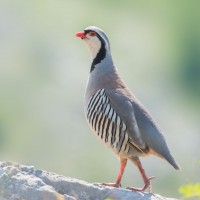 Captivating Croatia: Birding the Adriatic Coast FULL - Check out Romania & Bulgaria: Black Sea Coast Migration!April 8 - 20, 2025
Captivating Croatia: Birding the Adriatic Coast FULL - Check out Romania & Bulgaria: Black Sea Coast Migration!April 8 - 20, 2025 -
 Finland & Norway: Birding & NatureJune 4 - 16, 2025
Finland & Norway: Birding & NatureJune 4 - 16, 2025 -
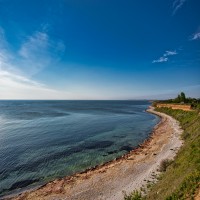 Romania & Bulgaria: Black Sea Coast MigrationSeptember 20 - 29, 2025
Romania & Bulgaria: Black Sea Coast MigrationSeptember 20 - 29, 2025
-
Essential Information +
Pace & Protocols +
Packing List +
Suggested Reading List +
Useful Links +
Photo credits: Banner Photo: Great Bustard by Gerard Gorman; Hungarian Gray Cattle by Gerard Gorman; Hungarian Home by Peg Abbott; Hoopoe by Gerard Gorman; Imperial Eagle, Hawfinch, European Bee-eater, Common Rosefinch, Syrian Woodpecker, European Suslik, Black Woodpecker, Orchards. Photos by Gerard Gorman; Purple Heron, Gerard Gorman; Border Poppy Fields, Gerard Gorman; Hoopoe, Gerard Gorman; Great Bustard, Gerard Gorman; Hawfinch, Gerard Gorman; Pygmy Cormorant, Gerard Gorman; Horse & Cart, Peg Abbott; Black Woodpecker, Gerard Gorman; Group Birding with Gerard, Peg Abbott; Common Rosefinch, Gerard Gorman; European Bee-eater, Gerard Gorman; Hungarian Greg Cattle, Gerard Gorman; Iron Curtain Trail Sign, Gerard Gorman; Saline Steppe Neusiedlersee-Seewinkel NP, Gerard Gorman; Syrian Woodpecker, Gerard Gorman; Mediterranean Gulls, Gerard Gorman; Blue Tit, Tom Dove; Collared Flycatcher, Gerard Gorman; Crested Tit, Tom Dove; European Bee-eaters, Gerard Gorman; European Kingfisher, Tom Dove; Little RInged Plover, Gerard Gorman; Rock Bunting, Gerard Gorman; Swallowtail, Gerard Gorman; Brown Hare, Gerard Gorman














